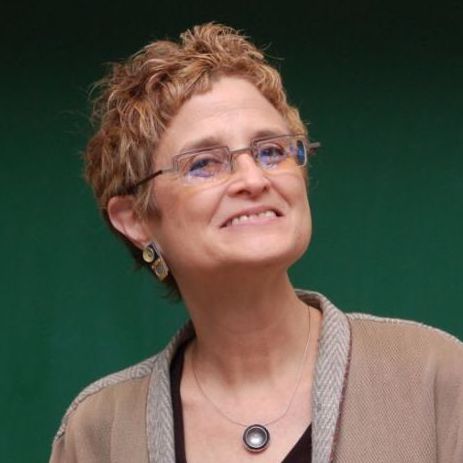Published: 01/10/2021
Dear Global Health Colleagues,
When one works in global health, one spends time thinking about what a global pandemic would look like. We have seen epidemics and spillover of zoonotic pathogens to humans, and we have even lived through pandemics before. We have pointed to data and disturbing trends, issued warnings, given talks, and yet despite it all, when our new reality began to take shape early this year, it was as startling to me and my fellow colleagues as it was to everyone else. I am currently reading a wonderful book called The Splendid and the Vile by Eric Larsen about Churchill and the bombing siege on London — the analogy to the siege and lockdown we are living through is stunning.
The Stanford Global Health community rapidly swallowed their astonishment and took the crisis head on, and while COVID-19 has been an all-consuming threat, I am also proud to report that we have addressed it without forgetting the many other ongoing struggles in global health. Enormous achievements have been made this year by our 170 Global Health Faculty Fellows, global health researchers, and committed students. Though I wish I could highlight them all, I would like to share a few achieved concurrent with pandemic efforts.
Kudos to those who have persisted in their efforts in Human and Planetary Health, correcting and better understanding environmental degradation and its immense consequences for human health. Stanford faculty have made immense gains in this field, from our expanded understanding of mosquito borne illnesses from Global Health Faculty Fellows Desiree LaBeaud and Erin Mordecai, which stands to save lives around the world, to doctors Kari Nadeau and Mary Prunicki’s research and communications on the health impact of wildfires. Stanford researchers from Disease, Health, and Ecology and myself presented evidence from Borneo on how accessible healthcare can curb deforestation, and Stanford Global Health Director of Research Steve Luby has advanced our understanding of the dangerous Nipah virus and it’s zoonotic transmission potential. Even our students have demonstrated passion and a zeal for results, planning and implementing the Norcal Symposium on Climate and Pandemic Resilience in Healthcare. And looking forward, I am excited that Stanford Global Health Senior Advisor, Diana Walsh will be moderating a panel with the Dalai Lama and Greta Thunberg on the climate crisis on January 9th — please register here to attend this special event.
Kudos to those who have advocated for gender parity, especially women’s careers in global health. The WomenLift Health team of our Center for Innovation in Global Health oversaw a flourishing cohort in their Leadership Journey and successfully hosted the 2020 Women Leaders in Global Health Conference with over 2,300 participants from around the world. Contributions to this growing effort are widespread amongst our faculty and even beyond. A new Global Center for Gender Equality is being formed by Gary Darmstadt and Sarah Henry. However, in a Lancet correspondence from Global Health Resident Brooke Gabster and myself, we sadly documented a dramatic drop in authorship for the female academic during COVID-19.
And I am proud of the great efforts our community has made towards health equity. While there is much work to do in this area beyond COVID-19, the virus magnified existing health disparities around the world. The Stanford Global Health community rose to the occasion, from open-source PPE resources to serving critical roles in migrant health along the U.S. – Mexico border, like Faculty Fellow Paul Wise, who continues to serve as the special expert for the U.S. Federal Court overseeing the treatment of migrant children. Faculty Fellows S.V. Mahadevan and Matthew Strelow shared COVID-19 treatment protocols with global healthcare providers by partnering with digitalMEdiC early in the pandemic, while others like Dr. Jason Andrews quickly took action to prevent disastrous outbreaks in U.S. prisons. Meanwhile, we are proud to have swiftly seeded six research grants to combat COVID-19, and partner with the Pine Ridge Reservation to assist them in preparing for an anticipated surge; Faculty Fellows Ana Crawford and Ewen Wang continue to provide support to this effort.
During a time when global health has never been more front-and-center to public view, there are myriad examples of courage, ingenuity, and stalwart leadership. The successful global effort to create not just one viable vaccine, but many, has been astonishing. As I write this, many of my colleagues are receiving safe and effective vaccines less than a year after the first case was observed, colleagues who have put themselves in harm’s way to continue treating patients. This accomplishment is an unrivaled testament to what we can do with aligned intent, scientific discovery, innovation, and political will.
This year we have witnessed harsh and daunting realities, from failing health systems, to flagrant systemic racism and gaping health disparities. With a newfound sense of what is possible (and great hopes for a new U.S. administration to boot), we need to keep these issues in the limelight. Let us leave this year behind us with the thought that we can rise to global health challenges such as COVID-19 and still work towards the health of our planet and equity of its inhabitants.
Finally, thank you to the dedicated and hard-working teams at the Center for Innovation in Global Health and WomenLift Health, as well as the larger Stanford Global Health community. Your efforts and resolve never fail to amaze me.
Pax — and health in the new year,
Michele Barry

Drs. Ben and A. Jess Shenson Professor of Medicine and Tropical Diseases
Director of the Center for Innovation in Global Health
Senior Associate Dean for Global Health, Stanford University